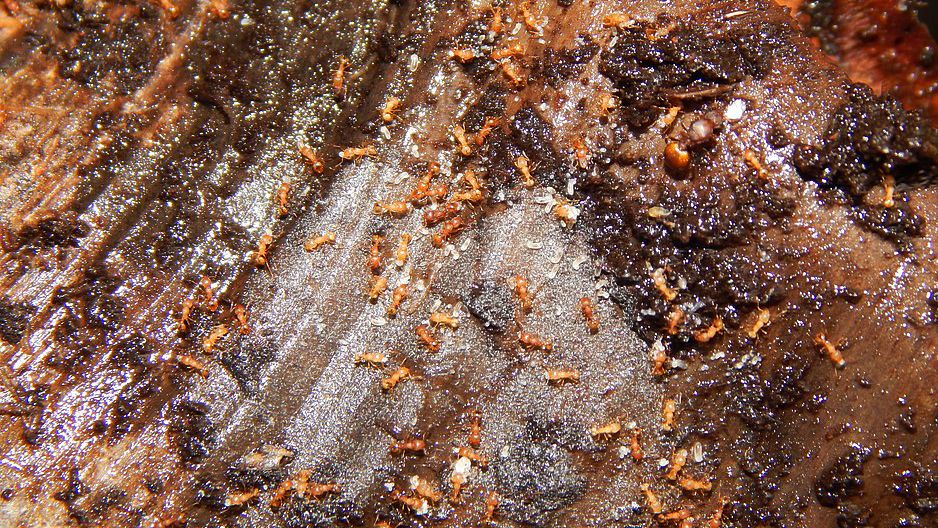HONOLULU — They invade your space via windows, doorways, even tiny puka in the floorboards. They also make tracks and build nests in your garden and landscaping. They are ants.
October is “Stop the Ant Month” in Hawaii, and the Department of Land and Natural Resources encourages residents to collect and submit ants to any of the islands’ Invasive Species Committees or the Hawaii Ant Lab for identification to detect and control the spread of invasive ants. By doing so, people participating in the statewide program have helped agencies detect Little Fire Ant infestations each year, preventing millions of dollars in impacts and costs for communities.
According to the Hawaii Ant Lab, the LFA is so small that it’s easy to overlook them, but when they become established in a new location, the colony can grow to as many as 22 million ants. When they sting, “probably more from alarm than aggression,” according to HAL, you’ll understand why they’re called the “Little Fire Ant.”
LFAs, native to South America, and other invasive ant species are also called “tramp ants” because they can hitch a ride on a shipping cargo, plants or produce to new locations.
On Oct. 12, the DLNR reported a new population of LFAs in Kauai’s Wailua River State Park after a resident had turned in a sample, illustrating the importance of community involvement.
“The location of this LFA population is concerning because of its proximity to the Wailua River,” stated Curt Cottrell in a news release. Cottrell is the administrator of the DLNR Division of State Parks. “LFA can ‘raft’ along waterways, allowing them to spread far greater distances.”
The Hawaii Department of Agriculture and Kauai Invasive Species Committee surveyed the area and estimate the new infestation covers roughly 13 to 35 acres. KISC will continue to conduct surveys to determine the full extent of the infestation.
“Our current priority is to find a solid perimeter of the infestation,” said Tiffani Keanini, KISC manager. “After we identify the size and terrain, we begin to develop a response plan, brainstorm management strategies, and list resources needed to address the population.”
Hawaii has no native ants. The priority is detecting new, harmful ant species, and managing harmful species such as LFAs.
Residents can request a free ant collection kit or can make their own. Put a thin smear of peanut butter on several chopsticks and leave them out to attract the ants. Carefully collect them after about an hour, seal them in a zip-top bag and freeze overnight. The sample can be submitted to any island Invasive Species Committee or HAL for identification.
According to the Stop the Ant website, LFAs are one of the “World’s 100 Worst Invasive Species” (IUCN Invasive Species Specialist Group). They’re pale orange and tiny, measuring 1/16th of an inch long. LFAs move slowly, unlike the tropical fire ant that’s larger and well established in Hawaii.
The sting of an LFA is painful and can cause large red welts, even blindness, in pets. They can completely overrun a property with large colonies in the ground, trees, other vegetation and inside buildings and homes.
LFAs were first detected, already widely disbursed, on Hawaii Island in 1999. At the time, there was no protocol for treatment, so HAL was established to research and develop methods for the eradication and control of LFAs. Several treatment methods are now available and ant populations can be managed or completely removed from homes if caught early enough.
The Hawaii Ant Lab conducts a free monthly online workshop for interested residents covering ant management basics, including pesticide safety, mixing and using gel baits and other topics. Call 808-315-5656, email info@littlefireants.com or visit their website (scroll down) to register. HAL also conducts farm site visits and offers virtual presentations to schools, community groups and organizations.
Sarah Yamanaka covers events, environmental and community news for Spectrum News Hawaii.



